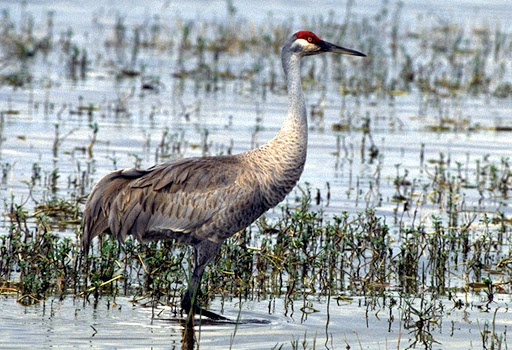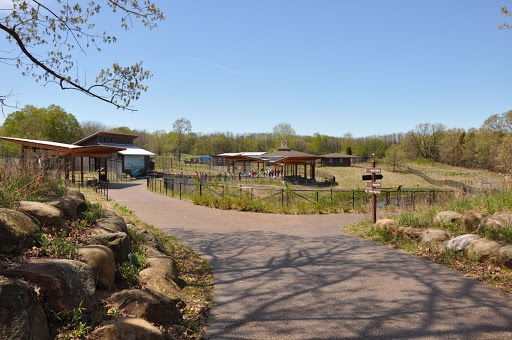The International Crane Foundation
When I was flying back from Turkey last month, I hit the jackpot with my seatmate. Aysen Erdil is a lovely woman - and co-founder of Turna symbiosis dernegi, the Turkish partner of the International Crane Foundation. I can't wait to share more of her story - look for it this year! Aysen recommended that I talk with George Archibald, the co-founder of the International Crane Foundation. Aysen was flying to Baraboo, Wisconsin, to meet with George - and her enthusiasm was infectious! My parents have a large farm and farmland, where sandhill cranes come each year. But I didn't know much more than their sounds and elegant form out in the fields, so I was eager to find out. I checked the website for the International Crane Foundation, and got drawn in - what an amazing organization, doing very important work.

Sandhill chicks

Sandhill crane, wading

Eurasian cranes
We were lucky enough to catch up with George, and discover the roots and inspiring work of this extraordinary organization. Here's what he had to say...
Please tell us about the International Crane Foundation...
ICF is a private organization dedicated to the conservation of the 15 species of cranes. This goal is met through studies of the cranes and their habitats, then working with local people and administrators to promote conservation. ICF also does captive breeding of cranes and then reintroduction to regions from which cranes have been extirpated as local conditions allow.

Whooping crane caretakers at The International Crane Foundation
What inspired you to start the ICF?
Interested in birds since childhood, I found cranes to be special interest because of their large size and remarkable behaviors, when at the age of 20, I worked in the summer at a game farm in northern Canada where captive cranes were maintained and over which wild Sandhill cranes migrated. I followed my interest to graduate school at Cornell University, where I made an interspecific comparative study of crane calls to estimate evolutionary relationships among the various species of crane. By writing to scientists worldwide in my quest for information about cranes, I became aware of the low numbers of and threats to several species. This spurred me and my colleague, Ron Sauey, to co-found ICF.

Black crowned cranes

Taking care of cranes at the International Crane Foundation
Please tell us more about crane conservation - and what people can do to help..
Protecting the cranes as individuals from killing, trapping and disturbance and protecting their wetland and grassland habitats are key ingredients to crane conservation. People who live near cranes can take immediate steps to help, while people who live far from cranes can spread the word and provide financial support to conservation efforts.

Brolga crane

Whooping crane puppet and chick
What can people discover at your Baraboo, WI campus?
The Baraboo campus of ICF is the only place on the planet where one can see all 15 species of cranes. Visitors are provided guided tours during which their learn about the biology of cranes, the significance of cranes in many cultures, and programs underway to help cranes. Along nature trails, they can also experience wetlands, grasslands, savannahs, and forests of north-central USA.

ICF Campus, Baraboo, Wisconsin

Original International Crane Foundation campus
Crane conservation is global - what are the efforts of people around the world, to conserve cranes?
In most nations, cranes are protected by law. In much of Asia, cranes are culturally valued as symbols of conservation and good fortune. For the Whooping Cranes, the rarest of cranes, efforts are made to conserved critical habitats, to breed cranes in captivity and to return them to the wild. For the most endangered of cranes, the Siberian Crane, 11 nations have signed an agreement to protect and restore populations throughout much of Asia. In Japan, cranes are fed by humans in winter and numbers have increased. In China, 52 nature preserves have been established to protect key habitats for cranes. In Mozambique, water is released from hydro dams to restore downstream floodplains for cranes. On and on...

Black necked cranes (above and below)

Learn more: https://www.savingcranes.org/
All photos courtesy and copyright the International Crane Foundation, used with permission
-

- Log in to post comments




















